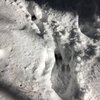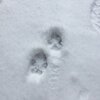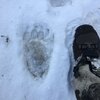This is probably the stupidest question ever, but hear me out.
I grew up in a really rural community where everybody hunted. However, nobody in my family ever did. Deer was the biggest and most popular wild game that people would hunt, and it seemed like everyone had a dad or uncle that was willing to show them.
I ironically hunt all year round and eat way more wild game than most of the people in my old community (groundhogs in the summer, squirrel, snipe, pheasant, rabbit, whatever), but everything I learned about hunting I originally I picked up from friends (this was pre-youtube). They showed me how to hunt small game, birds, fish, gut, and everything else. But nobody ever passed on the torch of deer hunting. It seems like a father son thing that I just missed out on
I've become a very accomplished hunter (in my opinion) but never actually bagged a deer. I really would like to do it this year, but how do you actually hunt them? I've only gone a few times and here's how I normally do it:
1. Get out the first day of rifle season before the sun gets up
2. Go to a place where I saw deer earlier during small game season / during the summer
3. Find an elevated spot where I can look down at them
4. Wait and not make any noise
5. Be downwind.
I usually just do that for a series of hours, never see anything, and then just start walking through the woods on trails. I sometimes end up seeing a deer every year this way, but they're never legal to shoot. By the time doe comes in later in the year, everything is so damn spooked I never see anything.
This year they're allowing doe and buck season to run concurrently in my county. I have a doe license. Do you think I should just do what I normally have and hope I see something? Is there a better method to doing this? I'd really like to kill one this year.
Bonus question:
What do you do with it after you gut it? Do you take it to a butcher? I've seen ads for deer processing places but, with CWD, I'm afraid someoen will just throw my deer in with all the others and I'll just junk.
Maybe this is silly but this is how I've learned to hunt everything else.
I grew up in a really rural community where everybody hunted. However, nobody in my family ever did. Deer was the biggest and most popular wild game that people would hunt, and it seemed like everyone had a dad or uncle that was willing to show them.
I ironically hunt all year round and eat way more wild game than most of the people in my old community (groundhogs in the summer, squirrel, snipe, pheasant, rabbit, whatever), but everything I learned about hunting I originally I picked up from friends (this was pre-youtube). They showed me how to hunt small game, birds, fish, gut, and everything else. But nobody ever passed on the torch of deer hunting. It seems like a father son thing that I just missed out on
I've become a very accomplished hunter (in my opinion) but never actually bagged a deer. I really would like to do it this year, but how do you actually hunt them? I've only gone a few times and here's how I normally do it:
1. Get out the first day of rifle season before the sun gets up
2. Go to a place where I saw deer earlier during small game season / during the summer
3. Find an elevated spot where I can look down at them
4. Wait and not make any noise
5. Be downwind.
I usually just do that for a series of hours, never see anything, and then just start walking through the woods on trails. I sometimes end up seeing a deer every year this way, but they're never legal to shoot. By the time doe comes in later in the year, everything is so damn spooked I never see anything.
This year they're allowing doe and buck season to run concurrently in my county. I have a doe license. Do you think I should just do what I normally have and hope I see something? Is there a better method to doing this? I'd really like to kill one this year.
Bonus question:
What do you do with it after you gut it? Do you take it to a butcher? I've seen ads for deer processing places but, with CWD, I'm afraid someoen will just throw my deer in with all the others and I'll just junk.
Maybe this is silly but this is how I've learned to hunt everything else.





